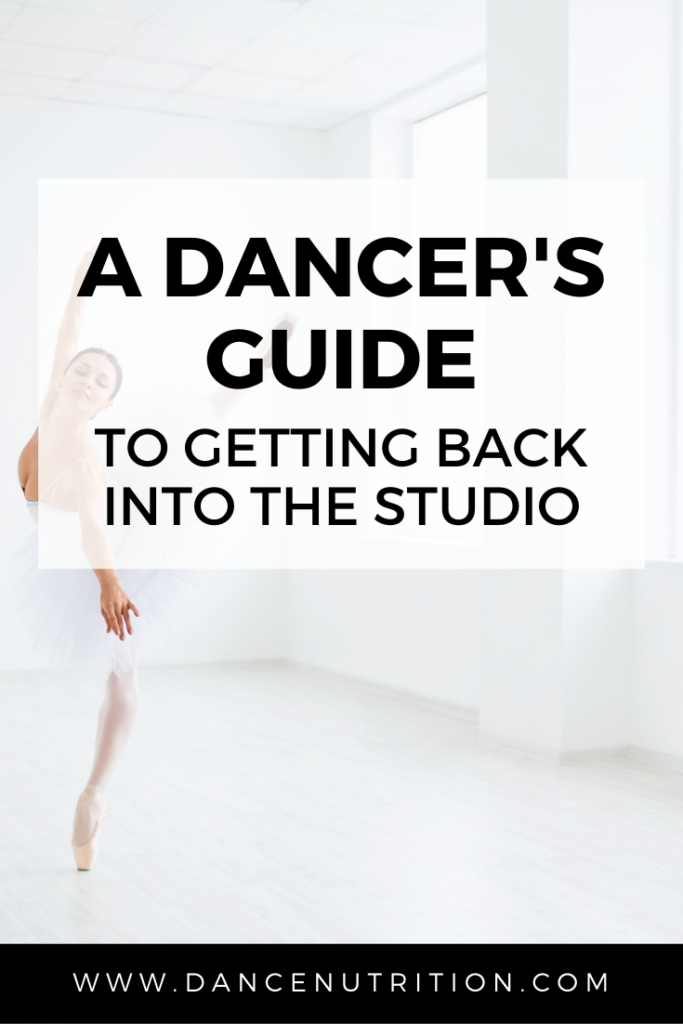You were taking time off from dancing—whether due to injury, vacation, or a prolonged break from your demanding routine. Now, a mix of emotions is likely to come up as you plan your return to the studio. Worrying about lost progress, changes in your body, or simply the pressure to pick up where you left off is common.
The desire to “get back into dancing shape” becomes problematic when focusing solely on your physicality. Dancers turn to behaviors like calorie counting and weight tracking— supposed methods that offer comfort in the ability to micromanage body-related goals. Spoiler: this comfort (and control) is fleeting, risking your mental and emotional well-being while damaging your long-term goals by January.
To ease the transition in ways that support you now and later— physically and emotionally— here are strategies to implement.
#1: Start with realistic expectations
After time away, it’s crucial to adjust your expectations. Dialing down your usual routine can feel scary if you’re accustomed to higher levels of dancing. You might not have the same strength, flexibility, or stamina as before, and that’s okay. Focus on gradually rebuilding your skills. Were you working on triple pirouettes a few months ago? Now might be the time to aim for a clean and controlled double. 32 fouettés seem out of reach? Start with 10! From there, you’ll be able to regain the strength and endurance needed to achieve your goals.
#2: Prioritize the journey, not the end-goal
Celebrate small victories, like regaining certain movements or improving your endurance bit by bit. Remember, progress is not linear, and taking things step by step will help prevent burnout and injury.
#3: Ease into it
Jumping back to your baseline can lead to overworked muscles that are not quite ready to take on a full load. Your muscles and joints may be stiffer or less responsive, increasing the risk of injury. Spend extra time on dynamic stretching, gentle cardiovascular activities, and mobility exercises. Similarly, incorporating recovery movements like foam rolling increases blood flow and helps reduce muscle soreness.
A sustainable cross-training routine— activities like yoga, Pilates, swimming, or strength training can help build flexibility, endurance, and strength while working in correct alignment. These practices can also break up the monotony of classes, keeping you motivated and engaged. Click here to learn more about building a sustainable cross training routine.
#4: Recognize the role of nutrition
Your body needs adequate fuel to support a safe and effective return to dancing. Pay attention to your nutritional needs, which may have shifted if your activity level changed during your time off. Ensure you’re eating enough to support your energy expenditure— performance nutrition utilizes a gentle approach to fueling with proactive and consistent mealtime patterns.
#5: Listen to your body and communicate
If you’re easing into dancing after an extended time off, let others know you might need to modify exercises or take things slower. Dance educators should offer guidance, adjustments, and encouragement that align with your abilities. Honest communication can also reduce the pressure you may feel to perform at a level you’re not yet ready.
In addition to this is recognizing when to slow down. Pain, excessive fatigue, or prolonged soreness are signs you might be pushing too hard too soon. It’s better to ease into your routine gradually than to risk injury.



